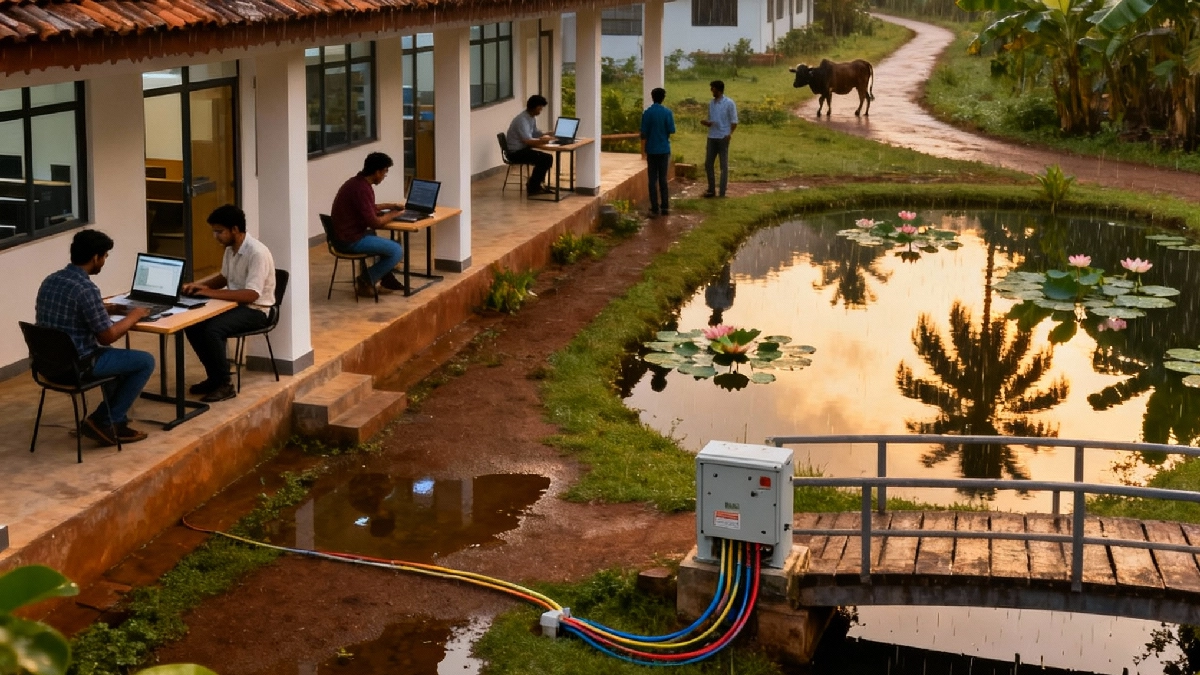Most tech stories orbit venture capital and metro hubs; Zoho’s India story is contrarian—profitable, private, product-led, and deliberately rural-first—yet its choices ripple through talent markets, MSME digitization, public digital rails, and local economies. Understanding “why Zoho Corporation India” matters means seeing how these elements reinforce one another over time.
India-first, product-led, private
Zoho builds a full-stack suite of business software—CRM, finance, analytics, collaboration, IT management—while remaining privately held and profitable. That independence enables patient bets: new platforms, deeper R&D, and multi-year campus building without quarterly pressure. The outcome is strategic freedom to serve Indian businesses’ needs while compounding capabilities across the stack.
A rural talent supply chain
Zoho’s expansion blueprint pushes beyond metros into smaller towns and rural districts across southern Tamil Nadu and other regions. The thesis is simple and powerful: India’s overlooked talent pools are abundant, and proximity unlocks them better than relocation. Local campuses reduce congestion costs, broaden participation, and create resilient teams rooted in community.
Zoho Schools and workforce formation
Nontraditional pathways like Zoho Schools of Learning feed these campuses with hands-on training and direct transitions into product teams. By decoupling opportunity from elite credentials, Zoho lowers hiring friction, diversifies skills, and anchors knowledge creation near its distributed offices. The result is a steady, values-aligned pipeline tuned for product craftsmanship.
Economic second-order effects
A rural-first footprint catalyzes local multipliers: steady incomes support education, vendors professionalize to meet enterprise standards, and civic priorities shift toward knowledge-economy infrastructure. Over time, these effects compound—strengthening participation of women in the workforce, stabilizing household finances, and maturing local services around new tech anchors.
Product breadth as an operating system
Zoho’s suite functions like an “operating system for business,” spanning 50+ apps across sales, finance, operations, support, and analytics. For Indian MSMEs, this reduces integration overhead, simplifies vendor management, and accelerates go-live. The breadth matters because it maps to real workflows—billing, taxes, inventory, field service, POS—without stitching together fragmented tools.
Alignment with India’s digital public infrastructure
By integrating payments, e-invoicing, and commerce into its stack, Zoho fits naturally with India’s digital rails such as UPI, e-invoicing standards, and ONDC participation through commerce tools. This alignment lowers adoption friction for small businesses, speeds formalization, and improves compliance and insight—all within systems already familiar to Indian operators.
Global credibility, local roots
With headquarters in Chennai and significant global presence, Zoho pairs international execution with India-led R&D and infrastructure investments. Running its own data centers and deepening hardware expertise signals long-term vertical integration, resilience, and performance control. The combination of global customers and local grounding strengthens durability through cycles.
Why “Zoho in India” is strategically different
- It proves a scalable beyond-metro model by building viable tech campuses in smaller towns, tapping underutilized talent while relieving metro bottlenecks.
- It composes a complete flywheel: talent formation (Zoho Schools) → rural campuses → product R&D → MSME adoption → local vendor maturity → community outcomes.
- It swaps burn for compounding: profitability funds patient community-building, creating stickier teams and lower attrition than metro churn.
Practical implications for Indian businesses
- Faster digitization with lower integration risk: CRM, accounting, payments, POS, service, and analytics under one umbrella.
- Localized implementation ecosystems: Indian partners, time-zone alignment, and transparent pricing reduce total cost of ownership compared to stitching global point solutions.
- Future readiness: native hooks into India’s digital rails support compliance, analytics, and omnichannel commerce as policy and market norms evolve.
The broader play: resilient, distributed innovation
New offices and labs in emerging towns point to a replicable template across districts: bring work to talent, not talent to congested hubs. Partnerships with universities, dedicated labs, and community programs deepen local capability, while product alignment with national digital infrastructure keeps the stack relevant for India’s next decade of formalization.
The quiet contrarian thesis
Zoho’s wager is that India’s sustainable SaaS advantage comes from a dense mesh of town-level studios, fed by alternative education pipelines and funded by profits, not hype. If this continues, “Zoho Corporation India” becomes more than a company profile—it becomes a playbook for distributed, dignified, and durable tech-led growth.
Last Updated on October 18, 2025 by Lucy



